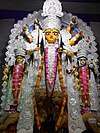Culture of West Bengal
| Part of a series on the |
| Culture of Bengal |
|---|
 |
| History |
|
Mythology and folklore |
| Cuisine |
|
History
Genres Institutions
Awards
|
|
Music and performing arts Folk genres Devotional Classical genres Modern genres People Instruments Dance Theater Organizations People |
|
| Part of a series on |
| Bengalis |
|---|
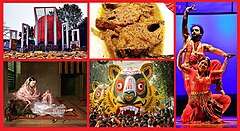 |
|
Bengali homeland |
|
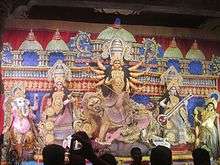
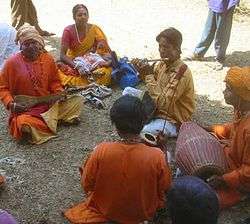
The culture of West Bengal is an Indian Culture which has its roots in the Bengali literature, music, fine arts, drama and cinema. Different geographic regions of West Bengal have subtle as well as more pronounced variations between each other, with Darjeeling Himalayan hill region and Duars showing particularly different socio-cultural aspects.
West Bengal's capital Kolkata—as the former capital of India—was the birthplace of modern Indian literary and artistic thought,[1] and is referred to as the "cultural [or literary] capital of India".[2][3] The presence of paras, which are cluster of neighbourhoods that possess a strong sense of community, is characteristic of West Bengal.[4] Typically, each para has its own community club and, on occasion, a playing field.[4] Residents engage in addas, or leisurely chats, that often take the form of freestyle intellectual conversation. However, with the growth of apartments, expansion of neighbourhoods and rapid urbanization, this culture is on decline. Adda is very common among the old peoples.[5][6] West Bengal has a long tradition of popular literature, music and drama largely based on Bengali folklore and Hindu epics and Puranas.
Religion, specially Hinduism, the principal and predominant religion of the state, plays a vital role in the culture of West Bengal. Durga Puja, a five-day annual autumnal celebration in honour of Hindu goddess Durga, is the biggest festival of majority Bengali Hindus. Since Bengal is a part of India, its culture has been an amalgamation of predominant Hindu culture with the secular Bengali culture which have drawn its inspiration from the modern Western culture.
Literature

The Bengali language boasts a rich literary heritage, shared with neighbouring Bangladesh. West Bengal has a long tradition in folk literature, evidenced by the Charyapada, Mangalkavya, Shreekrishna Kirtana, Thakurmar Jhuli, and stories related to Gopal Bhar. In the nineteenth and twentieth century, Bengali literature was modernized in the works of authors such as Bankim Chandra Chattopadhyay, Michael Madhusudan Dutt, Rabindranath Tagore, Kazi Nazrul Islam, and Sharat Chandra Chattopadhyay. Coupled with social reforms led by Ram Mohan Roy, Swami Vivekananda, and others, this constituted a major part of the Bengal Renaissance.[7] The middle and latter parts of the 20th century witnessed the arrival of post-modernism, as well as literary movements such as those espoused by the Kallol movement, hungryalists and the little magazines.[8] Jibanananda Das, Sukumar Ray, Sukanta Bhattacharya, Bibhutibhushan Bandopadhyay, Tarashankar Bandopadhyay, Manik Bandopadhyay, Narendranath Mitra, Subodh Ghosh, Ashapurna Devi, Shirshendu Mukhopadhyay, Buddhadeb Guha, Mahashweta Devi, Samaresh Majumdar, Mani Shankar Mukherjee, Dinesh Das, Sanjeev Chattopadhyay, Syed Mustafa Siraj, Sunil Gangopadhyay and Joy Goswami among others are well-known writers of the 20th century.
Theater and films
Among other types of theater, West Bengal has a tradition of folk drama known as jatra.[9][10] Kolkata is the home of the Bengali cinema industry, dubbed "Tollywood" for Tollygunj, where most of the state's film studios are located.[11] Its long tradition of art films includes globally acclaimed film directors such as Academy Award-winning director Satyajit Ray, Ritwik Ghatak, Mrinal Sen, Tapan Sinha, and contemporary directors such as Aparna Sen, Buddhadeb Dasgupta, Goutam Ghose, Koushik Ganguly, Rituparno Ghosh, Anjan Dutt, Nandita Roy, Shiboprosad Mukherjee and Srijit Mukherji.[12]
Architecture

Architecture of Bengal includes various types of motifs as well as it represents the different eras of the region. Terracotta, Islamic, Indo-Saracenic, British architecture etc. include many temples, mosques, churches, palaces, forts, monasteries and rajbaris. British Calcutta was known as the 'City of Palaces', while modern city has large number of apartments and housing complexes which characterize all metropolis of the world. Bengali village housing is noted as the origin of bungalow.
Fine arts
There are significant examples of fine arts in Bengal from earlier times such as terracotta art of Hindu temples, Kalighat paintings etc. Bengal has been the harbinger of modernism in fine arts of India. Abanindranath Tagore, called the father of Modern Indian Art had started the Bengal School of Art which was to create styles of art outside the European realist tradition which was taught in art colleges under the colonial administration of the British Government. The movement had many adherents like Gaganendranath Tagore, Benode Behari Mukherjee, Ramkinkar Baij, Jamini Roy and Rabindranath Tagore. After Independence, important groups like the Calcutta Group and the Society of Contemporary Artists were formed in Bengal which dominated the art scene in India. Graffiti cannot be generally categorised as a fine arts or aesthetic creation, but it has become an inseparable part of popular street-art. It is mainly for political propaganda. Walls are "captured" for fixed numbers of years, and graffiti over-painting is tantamount to political transgression. Generations of political graffiti artists have been at work on Kolkata's walls, producing slander, witty banter and limericks, caricatures and propaganda. However, such acts being clear cases of defacing private property, the Calcutta High Court ruled to ban political graffiti from private properties without express consent of the property owner. Graffiti lives on in "club" walls, unclaimed property walls, and the occasional flouting of the order. Graffiti artists have become a part of Kolktata's heritage. Many house owners now welcome them to paint on their walls so that these are not captured by political parties. Social messages like AIDS awareness, environmental issues etc. are now getting more popularity.
Music and dance
The Baul tradition is a unique heritage of Bengali folk music, which has also been influenced by regional music traditions.[13] Other folk music forms include Gombhira, Bhawaiya, kirtans, and Gajan festival music. Folk music in West Bengal is often accompanied by the ektara, a one-stringed instrument. West Bengal also has an heritage in North Indian classical music. The state is recognised for its appreciation of rabindrasangeet (songs written by Rabindranath Tagore) and Indian classical music. Popular music genres include adhunik songs.[14][15] Since the early 1990s, new genres have emerged, including one comprising alternative folk–rock Bengali bands.[14] Another new style, jibonmukhi gaan ("songs about life"), is based on realism.[16]
Bengali dance forms draw from folk traditions, especially those of the tribal groups, as well as the broader Indian dance traditions. Chau dance of Purulia is a rare form of mask dance. Gaudiya Nritya is a classical Bengali school of Indian dance, originating in Gaur, West Bengal, the ancient capital of the Bengal region. Various forms of Indian classical dances are patronised, as are dances set on the songs of Tagore and Nazrul. The people of West Bengal, in the first day of Bengali new year or Poyela Boishakh organises a rally known as Mongal Shobhajatra with a view to resist and fight against all sorts of evils of the world in order to welcome the goodwill of the masses.
Masks and masks dance
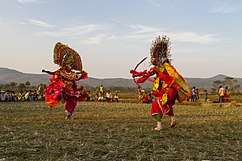
Mask or Mukhosh of West Bengal, as it known has a mysterious historyis is a true culture of Bengal. Mostly it uses for the Mask Dance, the folk dance of West Bengal. The wearing of these masks is connected with early types of folklore and religion. There is various type of masks made up of clay, wood, sponge wood or shola, pith, paper, metal etc. Generally, half masks are made up of clay, pith and paper and wooden masks are very rare. Some of the masks came from the Tribal of West Bengal. Geographically, West Bengal comes well within this mask using culture zone. Mask in West Bengal is mostly used in folk dance.[17][18] UNESCO selected The Rural Craft Hub of Bengal to showcase their artwork in Paris in 2015.[19]
Attire
Though Bengali women traditionally wear the sari and shalwar kameez, Western attire has gained acceptance among younger and professional women.[20] Western-style dress has greater acceptance among men, although the traditional costumes like dhoti, panjabi, kurta, sherwani, pyjama and lungi are seen during weddings and major festivals. Like any other metropolis, Kolkata also has an eclectic mix of western wears with a tinge of ethnic wears. People are found dressed in jeans along with kurtas, or sari along with an overcoat.
Cuisine
West Bengal shares its distinctive culinary tradition with neighbouring Bangladesh, and also borrows from other Indian states. Boiled rice and roti constitute the staple Bengali food, and is served with a variety of vegetables, fried as well with curry, thick lentil soups, and fish, egg and meat preparations of mutton and chicken, and more rarely pork, duck, lamb and beef by certain groups. Sweetmeats are mostly milk based, and consist of several delights including roshgulla, doi, sandesh, rasamalai, amriti, kalo jamun, pantua, rajbhog, gaja, bonde, pithe, mihidana, laddu and chom-chom. Several other sweet preparations are also available. Bengali cuisine is rich and varied with the use of many specialized spices and flavours. Fish is the dominant source of protein, cultivated in ponds and fished with nets in the fresh-water rivers of the Ganges delta. More than 40 types of mostly freshwater fish are common, including carp varieties like rui (rohu), katla, magur (catfish), telapia, bhetki, koi, lyata, tangra, sole, shingi, pabda etc. Chingri (prawn or shrimp), crabs, oysters and shuţki machh (dried sea fish) are also popular. Salt water fish is ilish (hilsa ilisha) is very popular among Bengalis, and it can be called an icon of Bengali cuisine. Various sea fishes like pomfret, bhola are also favourites. Prominent influx of Mughal (biryani, kebab), Anglo-Indian, Continental, Chinese, Lebanese, Thai and other provincial foods has also occurred and thus resulting in a shift in food choice among the younger generation. There are also numerous popular snacks, beverages and street-foods. Cakes and pastries are sold especially during Christmas.
Festivals and Celebrations
West Bengal is famous for its culture and festivals are an inevitable part of this culture. People of different religions and communities perform their religious rituals with festivities. Some festivals are celebrated statewide, while others are local in nature. There are also various other village fairs and seasonal tribal festivals. Durga Puja is the biggest and most important festival of West Bengal, and it features colourful pandals, decorative idols of Hindu goddess Durga and her family, lighting decoration and immersion processions. Other major festivals are Kali Puja, Diwali, Holi, Saraswati Puja, Jagaddhatri Puja, Rath Jatra, Kojagori Lakshmi Puja, Vishwakarma Puja, Poush Parbon, Poila Boishakh, Eid, Muharram, Christmas etc. Kolkata Book Fair, Kolkata International Film Festival and Dover Lane Music Festival are major annual cultural events of Kolkata, whereas Poush Mela, Ganga Sagar Mela, Jhapan are some of the major annual fairs of the state. The diverse ethnic populace of Darjeeling Himalayan hill region celebrates several local festivals such as Losar, Dusshera or Fulpati, Tihar, Ram Navami, Maghe Sankranti, Chotrul Duchen, Buddha Jayanti, Tendong Lho Rumfaat etc.
Durga Puja
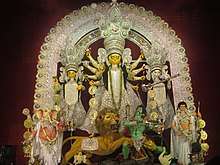
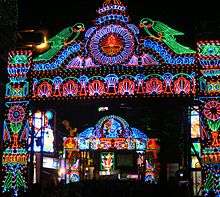
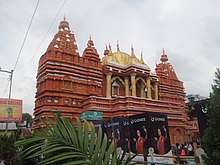
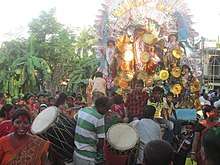
Durga Puja, held in September–October, is the biggest and most important festival of West Bengal. It marks the victory of ten-armed goddess Durga over the buffalo demon Mahishashur and signifies the victory of good over evil. The festival commences on Mahalaya, a week before the actual Puja celebrations begin on Sashthi and continue through Saptami, Ashtami, Navami and Bijaya Dashami, when the festival comes to an end. Pandals are set up and idols of goddess Durga and her four children - Lakshmi, Saraswati, Kartik, Ganesh are worshipped and displayed for five days across the state, especially in Kolkata. Some 2000 pandals are erected throughout Kolkata. Idols of the goddess are brought in mostly from Kumartuli, the potters' district. Pujas are also conducted in sizeable number of family households and housing societies. Elaborate rituals are performed by priests amid sound of drums (dhaak), conch shell (shaankh) and bells, and many devotees join in the prayers. Although the root of Durga Puja is essentially religious, the festival has slowly changed into more of a social carnival than a religious festival, where people from other religious or ethnic backgrounds freely participate in the festivity. It has become Kolkata's biggest public spectacle, glamorous art event and consumerist carnival. The city is decked up with lighting decorations. Loudspeakers play popular songs as well as recitation of mantras by priests. Shops, restaurants and eateries stay open all night. Fairs are set up in numerous parks and public spaces. The roads become overcrowded with hundreds of thousands of devotees, revellers and pandal-hoppers visiting the pandals on Puja days. The number of crowd is estimated to be a few million on the festive days and nights, possibly the second largest annual human congregation after the Hajj. It creates a chaotic traffic condition and vehicular movement comes to a standstill in many places. Elaborate security arrangements are made by Kolkata Police and additional personnel are deployed to prevent any untoward incident as well as to maintain crowd movement. Trains, buses, taxis and other modes of transport operate for whole night as crowds pour into the city from nearby districts and towns. The festival is celebrated with shopping and gift-giving - usually new clothes, family and other social gatherings, communal feasting and different cultural performances. Modern day Puja celebrations also include reading special Pujabarshiki magazines, going out for a tour, watching movies and special programmes on TV, preparing special food items or dining out etc. during the Puja holidays.
On Bijaya Dashami, the day of the festival, people bid adieu to goddess Durga offering her sweets and sindoor. Before bidding adieu to the goddess, the married women assemble near the idol, apply vermilion on her feet or forehead and then smear vermillion on each other. This is a part of the last celebration before the idols are taken out in grand processions of song, dance, music and then immersed in the waters. The idol immersion ceremony continues for the next few days. People distribute sweets and visit their friends, family members and relatives to exchange the Bijoya greetings.
Kojagori Lakshmi Puja
Goddess Lakshmi is worshipped at homes on the full moon night, just five days after Bijoya Dashami. Public Pujas are performed in the same pandals as for Durga Puja.
Kali Puja & Diwali

Kali Puja which coincides with the North Indian festival of Diwali is a major festival of West Bengal, and probably the second largest after Durga Puja. Goddess Kali is worshipped at night in thousands of pandals, homes and temples. Kali Puja is light-up night for Bengal. People decorate their homes with diyas, candles and lights and draw colourful rangolis on the floors of their homes. Children and adults burst firecrackers and burn sparklers throughout the night. A large number of devotees visit the temples to offer prayers to the goddess and animals, especially goats are sacrificed in some places. Two days after it is Bhai Phonta or Bhatri Dwitiya which is virtually the brother’s day. On Bhai Phonta, the sisters fast in the morning till they put a mark of sandalwood paste on their brothers' foreheads and treat them with gifts and delicacies. While doing so, they pray to God for the sound health, safety and prosperity of their brothers. The brothers in return present gifts to the sisters.
Saraswati Puja
Saraswati Puja, a festival honouring the goddess of learning and arts, is celebrated with domestic pujas, and familial gatherings in Kolkata on a date between the last week of January and the middle of February. The day is sacred to Saraswati, goddess of learning whose worship is celebrated with great splendor mainly by students and artists. Books are often worshipped in lieu of the clay image of the Goddess. Girl worshipers usually wear saffron and yellow-coloured cloths. The puja is especially celebrated in schools and other educational institutes. It gives an chance of free-mixing among school kids. This is the equivalent of Valentine's Day to them. The typical bhog which accompanies the Puja depends dramatically on whether the family is initially from West Bengal (or ghoti) or from East Bengal — now Bangladesh —(or bangal). Ghotis have vegetarian fare, while bangals offer paired Ilish fishes to the goddess and then consume it.
Holi (Dolyatra)

Dol, corresponding to the North Indian festival of Holi, is celebrated on account of the god Krishna, and is supposedly coincident with the advent of spring. Holi is locally known here as Dolyatra or Basanta Utsab. The celebrations start in the city with the burning of Holika bonfire on the night before Holi. The festival of colour involve throwing, sprinkling and smearing powdered colour (aabir), and water colour (jal rang) on others. Unknown passersby often get drenched by coloured water balloons, and celebrations often get rowdy with the men partaking the intoxicating drink of shiddhi (bhang), often laced with the stronger charas. Nowadays, Holi party usually means frolicking dance and various delicacies like sweets, biryani, beverages etc.
Rath Jatra

The symbolic movement of the chariot of Jagannath is celebrated with much fanfare in Kolkata due to closeness to Odia culture . The destination of the cult figures are the Maidan. Thousands of people spill into the roads to witness the pulling of the chariot. Images of Jagannath are set upon the chariots and pulled through the streets by the children as well as by the adults in many neighbourhoods and areas. The week is synonymous with numerous fairs (Rather mela) held all over Kolkata parks, known for their distinctive food and carousels. Myth has it that it always rains on the day of Ratha Jatra in Kolkata. The idols are brought back after a week in the chariot in the festival of Ulto Ratha. Rath Yatra is an ancient culture in Bengal in spite of having its origin at Puri in Odisha. The Ratha Jatra of Mahesh at Serampore (Srirampur) in Hooghly district is the second oldest chariot festival in India (after Rath Yatra at Puri) and oldest in Bengal. It is a month-long festival here and a grand fair is held at that time.
Jagaddhatri Puja
Though Jagaddhatri Puja is celebrated all over West Bengal, it is mostly confined in Chandannagar, Bhadreshwar and Rishra of Hooghly district, pockets of Nadia and Howrah districts. At Chandannagar, it is a five-day long puja, with pompous lighting decorations and pandals. In Kolkata, too, Jagaddhatri Puja is a major autumnal Hindu festival after Durga Puja and Kali Puja.
Vishwakarma Puja
Viswakarma puja is celebrated all over the state usually on 17 September each year and it marks the beginning of the month long puja session. Viswakarma, the divine architect represents the working class. Naturally the workers of different factories observe this day with honour, and they pray for safe working conditions on this day. Vehicles are decorated with garlands and streamers while engineers refrain from using gadgets and other devices as a mark of obeisance to the god. Workers of factories and warehouses celebrate this occasion by keeping their factories and warehouses shut for a day or two. The labourers enjoy the day with songs and special feasts. Idols and photographs of the deity are installed at workplaces including factories, automobile shops, bus stands and miniature replicas adorn the interiors of cabs and buses. The day is celebrated by youth and teenagers by flying colourful kites. Kites in a variety of shapes, sizes and vibrant hues float in the sky.
Ganga Sagar Mela
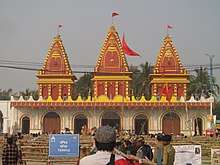
Gangasagar Mela is possibly the state's largest fair. As the name suggests, Gangasagar Mela is held in South 24 Pargana district's, Gangasagar or the shores of the voluminous Bay of Bengal. The festival commences on Makar Sankranti when hordes of ascetics, pilgrims and devotees flock to the picturesque Sagar Dwip islands. The annual fair is hosted during the winter months of January and February. Chilly sea breeze and wisps of salt water sting people's faces as they arrive here to take a dip in the holy waters and be absolved of their sins. The three day long affair is a gala occasion in the state. Pilgrims from all nooks and crannies of the country arrive to take a bath in the confluence of sea and river to seek salvation and the lord's blessings. There is a common belief among the locals that the girls who take the holy dip and pray at the ashram of Kapil Muni get handsome grooms and the boys get beautiful brides.
Charak Puja
Charak Puja is a special folk festival and it is celebrated on the last day of Chaitra month in the Bengali calendar or a day before Poila Boishakh. Lord Shiva and Goddess Shakti are worshipped on the day of Charak Puja. It is celebrated with great élan amongst the villagers. The rituals of Charak Puja, a way to show the miracle of God, are unique and, at times, a little risky. On this day, bamboo stages, of average height between 10 and 15 feet, are erected, with their ground full of knives, glass and thorns where devotees intentionally fall from above.
Poila Boishakh
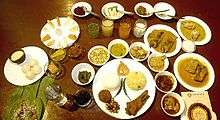
The first month of the Bengali calendar, Baishakh, marks the starting of the crop cycle in Bengal. A lot of Bengali weddings are held in this month, and new businesses started. The first day of this month is called Poila Baisakh is celebrated as the Bengali new year. The Bengali New Year or "Poila Baisakh" (the first day of the month of Baisakh) is celebrated on either 14 or 15 April on the basis of the lunar calendar of Bangabda. Visitors to homes are greeted with sweets, and trade establishments are decorated with auspicious garlands of marigold and aam (mango) leaves. Shop-owners and businessmen offer puja at temples in the morning with new ledgers or Halkhatas. Some open the first page by drawing the Hindu symbol of auspiciousness called swastika. Some shopkeepers print goddess calendars with their address, and distribute them to their clients. In some regions, festivities begin a few days before, with music and dance performances.
Kenduli Mela
On the occasion of Makar Sankranti (mid-January) Kenduli fair is held at Kenduli in Birbhum district. The Mela draws the largest number of Bauls, the wandering minstrels of Bengal. The river Ganga accounts for one of the huge festivals-cum-fair. On the last day of Poush, thousands of assembled pilgrims take a holy dip at the island beach on the estuary of the Bhagirathi river, where a makeshift township is erected for their reception by the state authorities. Complete bazaars (markets) crop up for meeting their needs. Medical and hospital facilities are made available and Hindu missionary bodies provide thousands of volunteers to look after their welfare.
Poush Mela
Poush Mela held at Shantiniketan in Birbhum district depicts the quintessential Bengali culture. The fair is hosted between 7th and 9th of the month of Poush, near about the time when the present Gregorian year is to bid farewell and preparations are made to welcome the new year, with its new hopes and new promises. Shantiniketan, the famed land from where the renowned Nobel Laureate Rabindranath Tagore drew his inspiration abounds in cultural and intellectual festivities throughout the year. On the inaugural day, the festival begins with a community prayer that includes Vedic hymns and reading from passages written by Maharshi Debendranath Tagore and Rabindranath followed singing of Rabindra sangeet by invited artists and students. After this, visitors assemble on the central stage at the fairground where the roving folk artistes like bauls, kirtan singers perform and jatras and dance performances are held. The kiosks and stalls are set up while many sellers sit wherever they like, spreading their earthenwares, handicrafts, toys etc. on the ground. The fair ground is continuously thronged by hordes of crowds for three days.
Jhapan
All over the western part of the state, a festival is held in the honor of Manasa, the central figure of snake worship on the previous day of the Bengali month Sravana (mid-August). But the most stunning is the one held at Vishnupur in the district of Bankura, with its display of snakes on open platforms where many snake-charmers gather.
Rash Jatra
The Vaishnav festival of Rash Jatra is observed in different parts of West Bengal in order to honor and venerate the divine love of Lord Krishna and Radha. It is held every year usually in the winters around the months of October–November. Rash Jatra is a procession with clay deities of Lord Krishna and Radha. The festival is celebrated with melodious songs, dance and folk stories. Various Hindu idols are worshipped in different pandals. The month-long Rash Mela begins after the procession and this annual fair is most famous in Nabadwip, Mayapur, Santipur, Cooch Behar and Sundarbans.
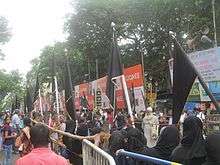
Christmas
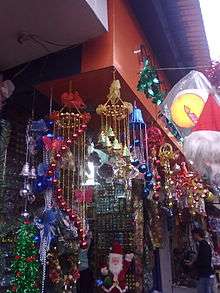
Christmas is celebrated in a big way at Kolkata and the festivities are joined by both Christians and non-Christians. Park Street, New Market and Bow Barrack are the centrestages of Christmas in Kolkata. The areas are beautifully decorated with fairy lights and Christmas trees. Musical performances are organized and it attracts a large number of revellers. People rejoice, eat cakes and other delicacies and attend the midnight mass at the churches.
Buddha Purnima
Buddha Jayanti, the birth anniversary of Lord Buddha is celebrated in the month of May. This festival is colourfully celebrated at various Buddhist monasteries in Darjeeling, Kurseong and Kalimpong of North Bengal. The hilly areas in and around Darjeeling also celebrate Lepcha and Bhutia new years with colourful fairs and traditional dances.
Fulpati
Fulpati is linked to Durga Puja and it marks the seventh day of Dashain. This predominantly Nepali festival is also celebrated by Lepchas and others with colourful processions and dancing from Ghum to Darjeeling town.
Kolkata Book Fair
The Kolkata International Book Fair or Kolkata Boi Mela is the world's largest non-trade annual book fair as well as the largest book fair in Asia. Held on the Milan Mela ground near Science City on E.M.Bypass, this fair has over 600 stalls, selling over Rs.23,000,000 worth of books and attracting more than 2.5 million visitors annually. It was started in 1970 by the Publishers' and Booksellers' Association. It has huge attraction with new poets and artists, an annual theme country and famous authors visiting the fair as chief guests. It offers a typical fairground experience with a literary theme with picknickers, singer-songwriters, artistes and candyfloss vendors. It starts on the last Wednesday of January, and continues for twelve days, including two weekends.
Kolkata International Film Festival
The Kolkata International Cinema Festival is screened annually from 10–17 November. The largest of its kind in India, it was started in 1995 and is affiliated with the International Federation of Film Producers' Association (FIAPF) in Paris. Kolkata's strong ties to film-making (through such icons as Satyajit Ray, Mrinal Sen and, Goutam Ghosh) has boosted the festival and it screens a number of critically acclaimed international films every year.
Dover Lane Music Festival
The Dover Lane Music Festival is a Hindustani classical music-oriented event, with performances from established musicians from several countries as well as new musicians. It has been held for the past years in the January conglomerate holiday (23 – 26 January) period and comprises three all-night recitals. Initially held open air at Dover Lane in Ballygunge area of South Kolkata, due to the large crowds, it is now held at the open-air theatre Nazrul Mancha on the Southern Avenue (Ballygunge area). It is held in conjunction with the Dover Lane Music Conference.
Weddings
Bengali shadi (shadi means marriage) Hindu wedding includes many rituals and ceremonies that can span several days. A traditional wedding is arranged by matchmakers, who are generally friends or relatives of the couple. The matchmaker facilitates the introduction among the family and the prospective bride and groom. Its a suitable match is not found, the help of professional matchmakers may be sought, or advertisements may be placed in newspapers or on the internet. However, the number of 'love-marriages' have spiralled upwards especially in urban areas. Bengali weddings are traditionally in four parts: the bride's Gaye Holud, the groom's Gaye Holud, the Beeye and the Bou Bhaat. These often take place on separate days. Usually there is the popular culture of hosting the bride's family by the groom's family on the night of Phool Sajja, the night of consummation. The first event in a wedding is an informal one: the groom presents the bride with a ring marking the "engagement", a system which is gaining popularity. This can sometimes be considered as Ashirwaad. The Hindu wedding ceremony is officiated over by a priest and the marriage is formalised when the couple walk around a sacred fire seven times. There can be subtle differences in Bengali Hindu marriages depending on family traditions and local customs in West Bengal. The rituals sometimes differ. In Paaka Katha (final talk), the parents of the bride/groom, along with one or two very close relatives/friends go to the other party's house to formally settle the marriage. It may be followed by a sumptuous lunch or dinner. However, the pattern of marriage is always slowly changing and few people also prefer official registry marriages with little or no formal rituals.
Apart from weddings, other important social functions include annyaprasan (first rice-feeding ceremony of Hindu babies), upanayan (poitey or sacred thread ceremony for Brahmins), birthday, marriage anniversary, griha prabesh (ceremony before residing in a new home), shraddha (funeral rites for the dead), sunnat (circumcision ritual of Muslim boys) etc.
Religion and ethnicity

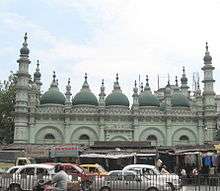
.jpg)
Unlike neighbouring Bangladesh which is predominantly Bengali Muslim, West Bengal is much more diverse in terms of religion and ethnicity. People belonging to almost all the religions, communities and ethnicities in India can be seen in West Bengal. Although Bengali Hindus form more than half of the total population of the state, there is a significant population of Bengali Muslims and non-Bengali Hindus like Marwaris, Biharis, Uttar Pradeshis, Odias etc. Moreover, Bengali Hindus are further divided into many castes, sects and jatis. Non-Bengali Muslims also form a sizeable population in urban areas like Kolkata. Among Kolkata's smaller communities are Chinese, Jews, Tamils, Nepalis, Odias, Telugus, Assamese, Gujaratis, Anglo-Indians, Armenians, Greeks, Tibetans, Maharashtrians, Konkanis, Malayalees, Punjabis, and Parsis. The other religious minority communities in the state include Christians, Buddhists, Sikhs, Parsis and Jains. There are about 38 dominant tribes in West Bengal, which together form 2% of its population. Santhals, Oraons, Mundas, Koras, Mahalis, Mrus, Loharas, Lodhas, Malpaharias, Bhutias, Lepchas, Gurkhas, Sabars, Garos, Cheros and Ravas are some of them. The variety in the religious beliefs and traditions of people in West Bengal make it an interesting culture-conglomerate.
Sports
Sports has its own importance in Bengal. Sports like cricket and football are most popular sports here. Boys and youngsters often play cricket at the street-corners and parks in Kolkata and other towns. Cricket and football can easily be called the life blood of the city. The home town of Eden Gardens, the city can boast of an impartial crowd of cricket lovers who cheer for good cricket even when their side is losing. Over a football match between archrivals Mohun bagan and East Bengal, the city can get divided. Apart from these, golf, kabaddi, kho-kho, polo, tennis are also played. Various outdoor activities like swimming, karate, yoga, cycling, kite-flying, athletics etc. have also gained popularity.
Culture of Darjeeling Himalayan hill region
The diverse ethnic populace of Darjeeling Himalayan hill region celebrates several local festivals. The Tibetan ethnic groups like the Lepchas, Bhutias, Gurungs, and Tamangs celebrate new year called Losar in January/February, Dusshera or Dashain, Diwali, Fulpati, Maghe Sankranti, Chotrul Duchen, Buddha Jayanti, Christmas and Tendong Lho Rumfaat, to name a few, which provide the "regional distinctness" of Darjeeling's local culture from the rest of West Bengal. The region is inhabited mainly by Hindus, Buddhists and Christians.
A popular food in Darjeeling is the momo, a steamed dumpling containing either chicken, mutton, pork or vegetables cooked in a doughy wrapping served with a watery vegetable soup and spicy tomato sauce/chutney. Wai-Wai is a favorite packaged snack of Darjeeling hills comprising noodles which are eaten either dry or with soup. Churpee, a kind of hard cheese made from cow or yak's milk is another popular mini-snack that is both nutritious and a pastime. A form of noodle called thukpa, served with soup and vegetables, is extremely popular in and around the hills of Darjeeling. Chhang and tongba are local alcoholic beverage made from millet. And also have unity in diversity.
See also
References
- ↑ Chaudhuri, Nirad C. (2001). The autobiography of an unknown Indian. New York Review of Books. p. 269. ISBN 978-0-940322-82-0.
- ↑ Reeves, Philip (5 April 2007). "Calcutta: habitat of the Indian intellectual". National Public Radio. Retrieved 29 January 2012.
- ↑ Noble, Allen and Frank Costa; Ashok Dutt; Robert Kent (1990). Regional development and planning for the 21st century : new priorities, new philosophies. Ashgate Pub Ltd. pp. 282, 396. ISBN 978-1-84014-800-8.
- 1 2 "Kolkata culture: Para". Department of Tourism, Government of West Bengal. Archived from the original on 21 December 2011. Retrieved 9 December 2011.
- ↑ Trachtenberg, P. (15 May 2005). "The chattering masses". The New York Times. Archived from the original on 5 December 2013. Retrieved 26 April 2006.
- ↑ Mukherjee Pandey, Jhimli (1 November 2008). "Presidency old-timers to relive days of canteen adda". Times of India. Retrieved 23 January 2012.
- ↑ Dutt, R.C. (1962). Cultural heritage of Bengal. Calcutta: Punthi Pustak. cited in Sengupta, Nitish K. (2001). History of the Bengali-speaking people. UBS Publishers' Distributors Pvt. Ltd. pp. 211–12. ISBN 81-7476-355-4.
- ↑ "India: The hungry generation". Time. 20 November 1964. Retrieved 24 January 2012.
- ↑ Chakraborty, Ajanta (5 July 2011). "Meet the new Mamata Banerjee". Times of India. Retrieved 23 January 2012.
The jatra industry based out of Kolkata's Chitpur Road has gone through a severe blow with the growth of video parlours.
- ↑ Niyogi, Subhro (26 October 2010). "Red alert For Jatra". Times of India. Retrieved 23 January 2012.
- ↑ Sarkar, Bhaskar (March 2008). "The melodramas of globalization". Cultural Dynamics. 20 (1): 31–51 [34]. doi:10.1177/0921374007088054. .
- ↑ Gooptu, Sharmistha (2010). Bengali cinema: 'an other nation'. Taylor & Francis. pp. 2, 172, 181, 187. ISBN 978-0-415-57006-0. Retrieved 24 January 2012.
- ↑ "The Bauls of Bengal". Folk Music. BengalOnline. Retrieved 26 October 2006.
- 1 2 Dorin, Stéphane (2005). "La globalisation du rock vue de Calcutta" [The globalization of rock to Calcutta]. Volume! La revue desmusiques populaires (in French). 4 (1): 144–45. Retrieved 29 January 2012.
- ↑ Shepherd, John (2005). Continuum encyclopedia of popular music of the world. 3–7. Continuum. pp. 70–71. ISBN 978-0-8264-7436-0.
- ↑ Bhattacharya, Malini (2005). "Culture". In Bagchi, Jasodhara. The changing status of women in West Bengal, 1970–2000: the challenge ahead. New Delhi: Sage Publications. p. 105. ISBN 978-0-7619-3242-0. Retrieved 10 February 2012.
- ↑ Masks of West Bengal_Publisher:Indian Museum_kolkata_Author: Sabita Ranjan Sarkar
- ↑ Masks of West Bengal.
- ↑ Roy, Tasmayee Laha (2016-02-05). "West Bengal rural craft hubs help artisans double their incomes". The Economic Times. Retrieved 2018-02-13.
- ↑ Yengkhom, Sumati (23 September 2010). "This Puja, buzz over western clothes". Times of India. Retrieved 23 January 2012.
